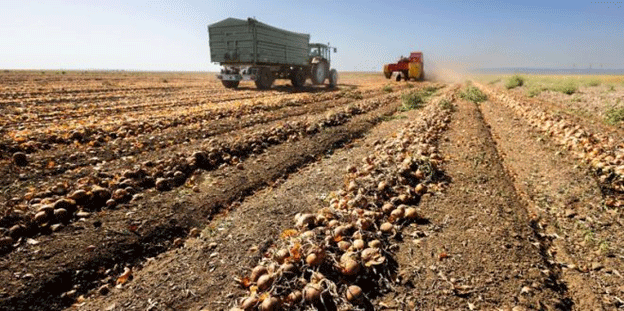New Zealand’s potato industry, despite facing a reduction in production, remains a global leader in yield efficiency. Potato New Zealand reported a total production of 419,200 tonnes for the 2022-2023 season, marking an 8.1% decrease from the previous year and a 20.5% drop from 2018-2019. This decline reflects broader challenges in the agricultural sector, yet New Zealand continues to achieve remarkable yields, exceeding those of many other countries.
Production and Yield Statistics
In the 2022-2023 season, New Zealand had 176 commercial growers who planted 8,424 hectares of potatoes. The overall production value was USD 570 million, down from over USD 610 million in the preceding four seasons. The breakdown of potato utilization reveals that 55.9% (234,194 tonnes) was allocated for processing, 40.2% (168,855 tonnes) for table use, with the remainder designated for seed.
Despite the decline in overall production, New Zealand maintained the highest yields globally in 2022, achieving an impressive 50.9 tonnes per hectare. This figure surpasses the USA’s 49.1 tonnes per hectare and Denmark’s 44.2 tonnes per hectare, which were the highest in Europe according to the UN’s Food and Agriculture Organization’s statistics.
Market Dynamics and Export Trends
While production data for the 2023-2024 season is not yet available, growers report significantly reduced prices this season, which implies an increased volume of potatoes. Last year, table potato export prices peaked at USD 737 per tonne but have since dropped to as low as USD 245 per tonne. This price reduction has had a significant impact on growers, necessitating adjustments in their production and marketing strategies.
Fiji remains the largest export destination for New Zealand’s table potatoes, accounting for 19,794 tonnes or 80% of total exports last year. French Polynesia and Samoa are also notable markets, contributing more than 5% of total sales.
Challenges and Opportunities
The fluctuations in production and market prices present both challenges and opportunities for New Zealand’s potato industry. The significant drop in export prices reflects a shift in market dynamics, potentially due to increased competition or changes in global demand. However, New Zealand’s ability to achieve the highest yields per hectare globally underscores the potential for continued leadership in potato production.
Innovations in agricultural practices, improved seed varieties, and efficient use of resources have all contributed to New Zealand’s high yield efficiency. Moving forward, the industry must focus on maintaining these high standards while adapting to market changes and addressing the challenges posed by fluctuating prices.
New Zealand’s potato industry, despite recent declines in production, remains a beacon of efficiency with its world-leading yields. The sector must continue to innovate and adapt to maintain its competitive edge and capitalize on both domestic and international market opportunities. By focusing on sustainable practices and leveraging its high yield efficiency, New Zealand can navigate the challenges ahead and ensure a prosperous future for its potato growers.

